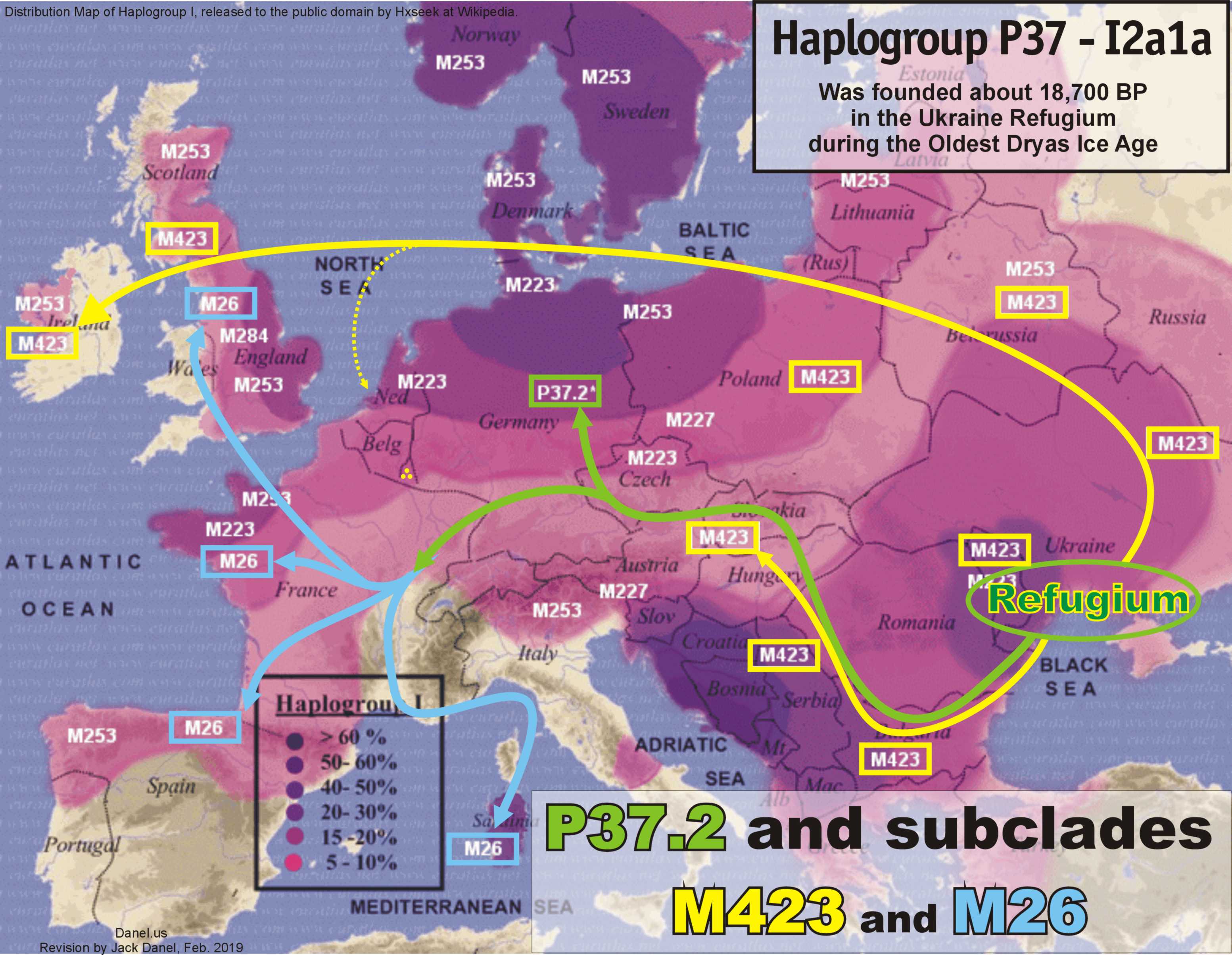




The 'Oldest Dryas' Ice Age
Haplogroup P37 and the second major extinction period
20,000 y.a. __Meiendorf Interstadial warm period began20,000 y.a. __Haplogroup I2a1a, called 'P37', originated near the Danube river delta.
Founded during the rather short (1,000 yr.) Meiendorf Interstadial warm period, various Dunbar groups of P37 spread quickly westward up the Danube and north up the various Ukrainian rivers. The timing of the move north was unfortunate since the next climate change was a quick change to a very severe cold period - the Oldest Dryas - and they could not survive there. Those who went up the Danube fared better because the Danube valley and the Dalmatian coast provided a refugium of sorts. Those who stayed in the Ukraine refuge dug in and held on. (SNP P37.2 defines this group)19,000 y.a. __Oldest Dryas ice age began producing a very severe cold climate
The Oldest Dryas was the second major extinction period in human history. It was the coldest and most lethal of all the ice ages. A treeless "polar desert" developed across Europe with a 500 km (300 mile) wide band similar to Arctic tundra between the ice and the habitable zone. The onset of the cold was severe enough and fast enough that most of the northern populations died before they were able to migrate south to the refugia. The total population was reduced by more than 75%.
P37 was split into many subgroups surviving the extreme climate in isolated valleys along the length of the Danube and in the Ukraine refugium. It developed two major splits. M423 emerged in the Ukraine refugium and M26 emerged in eastern France. There were also several small splinter groups.

|
18,500 y.a. __M-423 emerged from P37-east
The founding of Haplogroup I2a1a2 happened during the Oldest Dryas ice age, so it must have happened in or near the Ukraine refugium.18,000 y.a. __The few survivors all retreated to the various refugia
(SNP M423 defines this group)
The very severe climate lasted almost 4,000 years. In the refugia, once again the Malthusian catastrophe of too few resources for too many people played out. The Haplogroup I population was reduced to just eight haplotypes.18,000 y.a. __One of the 'Founder Effects' was the development of the genes for pale skin
It is the mutation of two genes - SLC24A5 and SLC45A2 - that leads to depigmentation. (These genes are different from the genes that cause Albinism: OCA1, OCA2, and OCA3). Pale skin originated in a subset of the population in the (probably) Balkan refuge. The trait spread slowly throughout the population.14,700 y.a. __End of the Oldest Dryas ice age. Start of the B�lling-Aller�d warm period
14,500 y.a. __M26-Sardinian branched off from P37 in southern France
13,000 y.a. __L621-Dinaric branched off P37, perhaps near the Danube delta